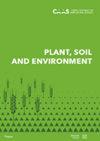长期施肥试验中作物序列对能源效率和土地需求的影响
IF 1.8
3区 农林科学
Q1 AGRONOMY
引用次数: 0
摘要
在潘诺尼亚气候条件下的一项长期实验中,分析了作物序列(CR–连续冬黑麦;R–冬黑麦-春大麦裸休耕的三田轮作)和施肥系统(未施肥控制、矿物肥料(NPK)、农家肥(FYM))对作物产量、能效指标和土地需求的影响。由于裸休耕的燃料消耗较低,CropR的总燃料消耗比CR低27%。NPK和FYM施肥的燃料消耗分别比对照高29%和42%。尽管CropR的能源产量低于CR,但粮食生产的能源利用效率提高了35%,地上生物质生产的能源使用效率提高了20%。在整个作物序列中,NPK处理具有更高的作物产量、能量输出和净能量输出,但能量利用效率低于未施肥对照。与CR相比,CropR仅增加了20%的土地需求,尽管三分之一的土地没有用于作物生产。施肥可以减少50%(NPK)或48%(FYM)的土地需求。轮作中的裸休耕年降低了作物产量、能源投入,提高了能源利用效率和土地需求。本文章由计算机程序翻译,如有差异,请以英文原文为准。
Crop sequence effects on energy efficiency and land demand in a long-term fertilisation trial
The effect of crop sequences (CR – continuous winter rye; CropR – three-field crop rotation of winter rye-spring barley-bare fallow) and fertilisation systems (unfertilised control, mineral fertiliser (NPK), farmyard manure (FYM)) on crop yield, energy efficiency indicators and land demand were analysed in a long-term experiment under Pannonian climate conditions. Due to lower fuel consumption in the bare fallow, the total fuel consumption for CropR was 27% lower than in CR. It was for NPK and FYM fertilisation by 29% and 42% higher than in the control. Although the energy output was lower in CropR than CR, the energy use efficiency for grain production increased by 35% and for above-ground biomass production by 20%. Overall crop sequences, the NPK treatment had higher crop yields, energy outputs and net-energy output with a lower energy use efficiency than the unfertilised control. CropR increased the land demand just by 20% in comparison to CR, although one-third of the land was not used for crop production. The land demand could be decreased with fertilisation by 50% (NPK) or 48% (FYM). A bare fallow year in the crop rotation decreased the crop yield, energy input and increased the energy use efficiency and land demand.
求助全文
通过发布文献求助,成功后即可免费获取论文全文。
去求助
来源期刊

Plant, Soil and Environment
Agronomy, Soil Science-农艺学
CiteScore
4.80
自引率
4.20%
发文量
61
审稿时长
2.4 months
期刊介绍:
Experimental biology, agronomy, natural resources, and the environment; plant development, growth and productivity, breeding and seed production, growing of crops and their quality, soil care, conservation and productivity; agriculture and environment interactions from the perspective of sustainable development. Articles are published in English.
 求助内容:
求助内容: 应助结果提醒方式:
应助结果提醒方式:


